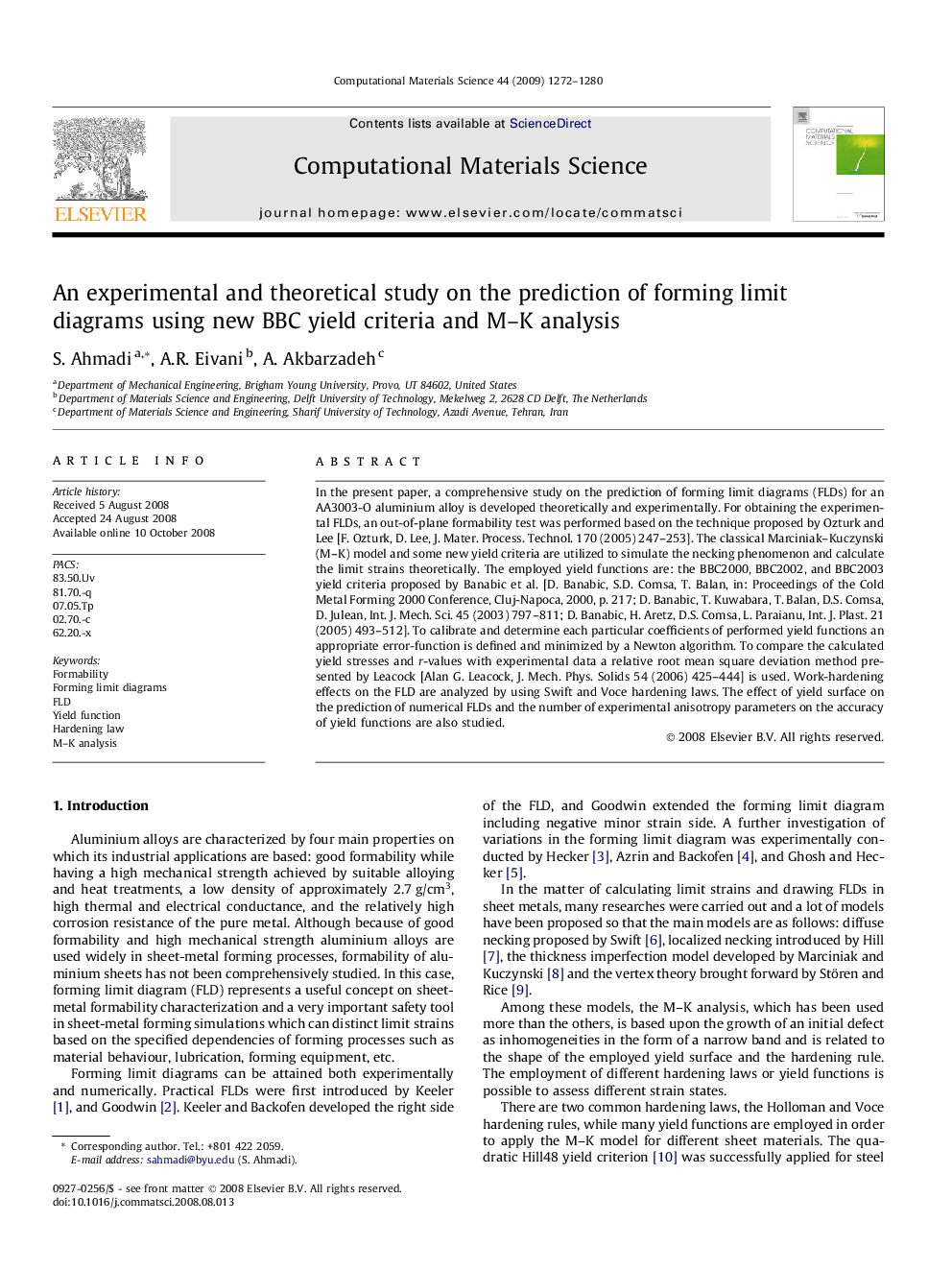| Article ID | Journal | Published Year | Pages | File Type |
|---|---|---|---|---|
| 1563906 | Computational Materials Science | 2009 | 9 Pages |
In the present paper, a comprehensive study on the prediction of forming limit diagrams (FLDs) for an AA3003-O aluminium alloy is developed theoretically and experimentally. For obtaining the experimental FLDs, an out-of-plane formability test was performed based on the technique proposed by Ozturk and Lee [F. Ozturk, D. Lee, J. Mater. Process. Technol. 170 (2005) 247–253]. The classical Marciniak–Kuczynski (M–K) model and some new yield criteria are utilized to simulate the necking phenomenon and calculate the limit strains theoretically. The employed yield functions are: the BBC2000, BBC2002, and BBC2003 yield criteria proposed by Banabic et al. [D. Banabic, S.D. Comsa, T. Balan, in: Proceedings of the Cold Metal Forming 2000 Conference, Cluj-Napoca, 2000, p. 217; D. Banabic, T. Kuwabara, T. Balan, D.S. Comsa, D. Julean, Int. J. Mech. Sci. 45 (2003) 797–811; D. Banabic, H. Aretz, D.S. Comsa, L. Paraianu, Int. J. Plast. 21 (2005) 493–512]. To calibrate and determine each particular coefficients of performed yield functions an appropriate error-function is defined and minimized by a Newton algorithm. To compare the calculated yield stresses and r-values with experimental data a relative root mean square deviation method presented by Leacock [Alan G. Leacock, J. Mech. Phys. Solids 54 (2006) 425–444] is used. Work-hardening effects on the FLD are analyzed by using Swift and Voce hardening laws. The effect of yield surface on the prediction of numerical FLDs and the number of experimental anisotropy parameters on the accuracy of yield functions are also studied.
